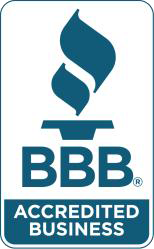
It’s one thing to realize that you need to protect your hearing. Knowing when to safeguard your ears is a different story. It’s not as simple as, for example, determining when to wear sunblock. (Is it sunny and are you going to be outside? Then you need sunblock.) It’s not even as simple as knowing when to use eye protection (Doing some hammering? Cutting some wood or working with dangerous chemicals? Use eye protection).
It can feel as though there’s a significant grey area when addressing when to wear ear protection, and that can be detrimental. Frequently, we’ll defer to our natural inclination to avoid hearing protection unless we have information that a specific activity or place is hazardous.
Risk Evaluations
In general, we’re not very good at assessing risk, especially when it comes to something as intangible as injury to the ears or the probability of lasting sensorineural hearing loss. Here are some examples to prove the point:
- Person A attends a very loud rock concert. The concert lasts about 3 hours.
- A landscaping business is run by person B. She spends a considerable amount of time mowing lawns, then goes home to a quiet house and reads.
- Person C works in an office.
You might think the hearing hazard is greater for person A (let’s just call her Ann). Ann leaves the performance with ringing ears, and she’ll spend the majority of the next day, struggling to hear herself speak. It seems fair to assume that Ann’s activity was rather hazardous.
Person B (let’s just call her Betty), on the other hand, is exposed to less noise. Her ears don’t ring. So her hearing must be less hazardous, right? Not really. Because Betty is mowing every day. The truth is, the damage accumulates a little bit at a time even though they don’t ring out. If experienced every day, even moderately loud noise can have a harmful affect on your ears.
What’s happening with person C (let’s call her Chris) is even more difficult to sort out. Lawnmowers come with instructions that indicate the hazards of ongoing exposure to noise. But although Chris has a relatively quiet job, her long morning commute through the city every day is rather loud. Also, while she works at her desk all day, she listens to her music through earbuds. Does she need to think about protection?
When is it Time to Worry About Protecting Your Hearing?
The normal guideline is that if you have to raise your voice to be heard, your surroundings are loud enough to do harm to your hearing. And you need to think about using earmuffs or earplugs if your environment is that noisy.
If you want to think about this a bit more scientifically, you should use 85dB as your limit. Sounds above 85dB have the capacity, over time, to result in damage, so in those situation, you need to consider using ear protection.
Most hearing specialists suggest getting a special app to keep track of decibel levels so you will be aware when the 85dB has been reached. You will be able to take the required steps to protect your hearing because these apps will inform you when the noise is reaching a hazardous level.
A Few Examples
Your phone may not be with you anywhere you go even if you do download the app. So we may formulate a good standard with a few examples of when to safeguard our hearing. Here we go:
- Household Chores: We already talked about how something as straightforward as mowing the lawn, when done often enough, can require hearing protection. Cutting the grass is a good example of the kind of household job that could cause damage to your ears but that you probably won’t think about all that often.
- Listening to music with earbuds. OK, this doesn’t require protection but does require caution. Pay attention to how loud the music is, how long you’re listening to it, and whether it’s playing directly into your ears. Think about getting headphones that cancel out outside noise so you don’t need to crank up the volume to damaging levels.
- Exercise: Your morning cycling class is a good example. Or maybe your evening Pilates session? All of these examples could require hearing protection. Those trainers who use microphones and sound systems (and loud music) to motivate you may be good for your heart rate, but all that loudness is bad for your ears.
- Using Power Tools: You understand that working all day at your factory job will call for ear protection. But how about the enthusiast building in his garage? Most hearing professionals will suggest you use hearing protection when using power tools, even if it’s only on a hobbyist level.
- Driving & Commuting: Do you drive for Lyft or Uber? Or maybe you’re just hanging around downtown for work or getting on the train. The constant noise of living in the city, when experienced for between 6 and 8 hours every day, can cause damage to your ears over the long haul, especially if you’re cranking up your music to hear it over the din.
A good baseline may be established by these examples. If there is any doubt, however, use protection. Rather than leaving your ears exposed to future injury, in most instances, it’s better to protect your ears. If you want to be able to hear tomorrow, protect today.
The content of this blog is the intellectual property of MedPB.com and is reprinted here with permission.
The site information is for educational and informational purposes only and does not constitute medical advice. To receive a personalized free hearing test and hearing loss consultation, call today to set up an appointment.









